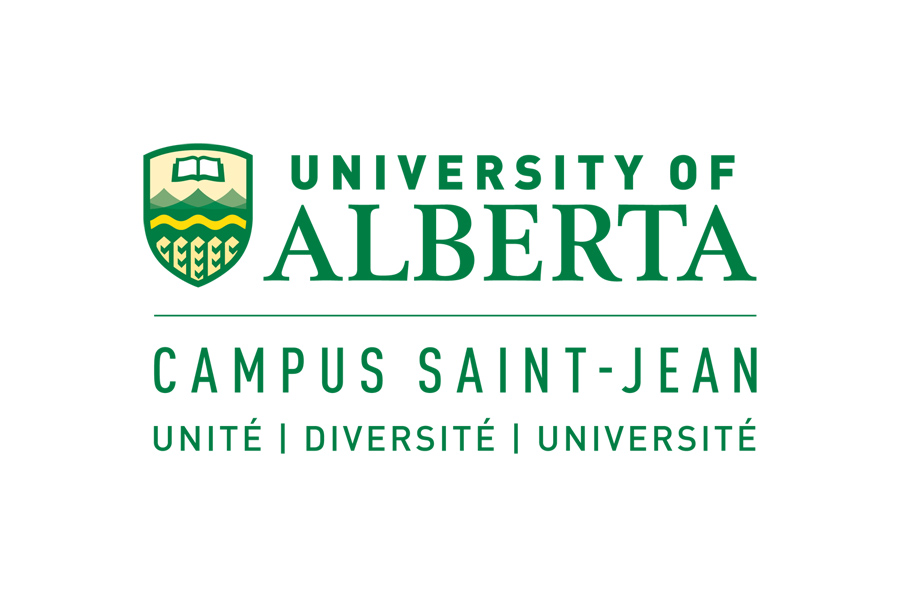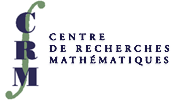Geometry and Physics
Org:
Vincent Bouchard and
Charles Doran (Alberta)
[
PDF]
- KAI BEHREND, University of British Columbia
Recent advances in Donaldson-Thomas theory [PDF]
-
We will report on recent advances in Donaldson-Thomas theory. We are particularly interested in categorification.
- VOLKER BRAUN, Dublin Institute for Advanced Studies
Calabi-Yau Threefolds with Really Small Hodge Numbers [PDF]
-
Calabi-Yau threefolds with small Hodge numbers are natural building
blocks for string theory compactifications. They arise also naturally
when searching for large fundamental groups. I will present some
recently-found Calabi-Yau threefolds with small Hodge numbers and discuss some
phenomenological applications.
- FREDDY CACHAZO, Perimeter Institute
- BENOIT CHARBONNEAU, St. Jerome's University in the University of Waterloo
A Hodge filtration on vector bundles [PDF]
-
In joint work with Mark Stern (Duke), we explore a new filtration on vector bundles coming from the asymptotic of the Bergman kernel and the relations between this filtration and the classical Hodge filtration on cohomology.
- JACQUES HURTUBISE, McGill University
Monopoles on the product of a surface and the circle. [PDF]
-
One of the important ingredients of the Witten-Kapustin approach to the geometric Langlands program is the study of singular monopoles on the product of of a Riemann surface and an interval. One special case of this in some sense is the product of a Riemann surface and a circle. We study the moduli of these, and prove a Hitchin-Kobayashi correspondence. When the surface is a torus, there is in addition an interesting Nahm transform to instantons on the product of a three-torus and the line. (with Benoit Charbonneau)
- LISA JEFFREY, University of Toronto
K-theory of the based loop group [PDF]
-
In this talk I describe results on the K-theory and equivariant K-theory of the based loop group.
Joint work with Megumi Harada and Paul Selick.
- SPIRO KARIGIANNIS, University of Waterloo
A new construction of compact $\mathrm{G}_2$ manifolds by glueing families of Eguchi-Hanson spaces [PDF]
-
Manifolds with $\mathrm{G}_2$ holonomy are examples of Ricci-flat Riemannian manifolds with parallel spinors, and play a role in M-theory analogous to the role of Calabi-Yau manifolds in string theory. They are $7$-dimensional manifolds equipped with a "non-degenerate" $3$-form $\varphi$ which determines a metric $g_{\varphi}$ and an orientation in a highly nonlinear way, and such that $\varphi$ is parallel with respect to the Levi-Civita connection of $g_{\varphi}$. Until now, there have been only two known constructions of compact examples, due to Joyce (1994) and Kovalev (2000), both using glueing techniques and the Fredholm theory of elliptic nonlinear PDE's on manifolds.
In this talk, I will discuss a new glueing-type construction (joint work with Dominic Joyce) of compact $\mathrm{G}_2$ manifolds. This construction involves glueing a family of Eguchi-Hanson spaces along a special Lagrangian submanifold $L$ of a Calabi-Yau manifold $X$ that admits an antiholomorphic isometric involution, in a particular way. We then show that one can obtain a $\mathrm{G}_2$ holonomy metric on a particular compact smooth $7$-manifold $M$ obtained from $X$, $L$, and the Eguchi-Hanson spaces. The main difficulty is that there is no natural torsion-free $\mathrm{G}_2$-structure on this varying family of Eguchi-Hanson spaces, and as a result in order to control the size of the error terms we need to solve an elliptic equation on the noncompact Eguchi-Hanson space to find a suitable correction term.
- OLIVIER MARCHAL, University of Alberta
Matrix models, beta-ensembles and "quantum" algebraic geometry [PDF]
-
The talk will deal with the resolution of two different regimes in random matrix models. First I will briefly review the notion of ``symplectic invariants" introduced by Eynard and Orantin to solve the hermitian matrix models. In particular this model has application in combinatorial geometry (BKMP conjecture). Then I will develop another regime of matrix models, in relation with $\beta$-ensembles, that can be viewed as a non-commutative version of the previous formalism. Instead of dealing with a standard algebraic curve and build algebraic invariants from it, the situation involves an ODE which in the easiest case of the one-matrix model can be rewritten as a Schr\"{o}dinger equation. From this equation, we develop a similar formalism that share almost the same properties as in the hermitian case.
- BRENDAN MCLELLAN, University of Alberta
Non-Abelian Localization and U(1) Chern-Simons Theory [PDF]
-
Our goal in this talk is to describe the method of non-abelian localization and how this method yields some new results in $U(1)$ Chern-Simons theory. Starting from a beautiful localization result of Duistermaat and Heckman, we review localization on a finite dimensional Hamiltonian $G$-space and recall how this result is generalized to path integrals in quantum field theory. In particular, we briefly recall Edward Witten's 1992 paper, ``Two dimensional Gauge Theories Revisted,'' where non-abelian localization is introduced and applied to two dimensional quantum Yang-Mills theory, and Chris Beasley's and Edward Witten's 2005 paper, ``Non-Abelian Localization for Chern-Simons Theory.'' We will then present our results (joint with Lisa Jeffrey), which follow by adapting the method of non-abelian localization to $U(1)$ Chern-Simons theory.
- STEFAN MENDEZ-DIEZ, University of Alberta
K-theoretic Aspects of String Theory Dualities [PDF]
-
String theory is a physical field theory in which point particles are replaced by $1$-manifolds propagating in time called strings. The $2$-manifold representing the time evolution of a string is called the string worldsheet. Strings can be either closed (meaning their worldsheets are closed surfaces) or open (meaning their world sheets have boundary). A $D$-brane is a submanifold of the spacetime manifold on which string endpoints are constrained to lie. There are five different string theories that have supersymmetry and they are all related by various dualities. This talk will review how $D$-branes are classified by $K$-theory. We will then explore the $K$-theoretic aspects of a hypothesized duality between the type I theory compactified on $\mathbb{T}^4$ and the type IIA theory compactified on a $K3$ surface by looking at a certain blow-down of the singular limit of $K3$. We will see that classifying $D$-branes on the type II orientifold $\mathbb{T}^n/\mathbb{Z}_2$ when the $\mathbb{Z}_2$ action is multiplication by $-1$ using equivariant $K$-theory provides added information about the ordinary $K$-theory of the blow-down of the singular limit of $K3$. We will discuss how combing features from a smooth $K3$ and its orbifold limit, $\mathbb{T}^4/\mathbb{Z}_2$, seems largely to resolve the apparent problems with the theory that arise when only considering a smooth $K3$ surface.
- ANDREY NOVOSELTSEV, University of Alberta
Hodge numbers of Calabi-Yau complete intersections [PDF]
-
(Joined work with Charles F. Doran.) We report on recent progress in computation of the (stringy)
Hodge numbers of Calabi-Yau complete intersections in toric varieties.
In 1994 Batyrev has obtained simple combinatorial expressions for some
of the Hodge numbers of anticanonical hypersurfaces in resolutions of
Fano toric varieties. In 1996 Batyrev and Borisov have obtained a recursive
formula for the generating function of all Hodge numbers of Calabi-Yau
complete intersections associated to nef-partitions. We have used this
function to obtain for complete intersections $Y$ of codimension two
combinatorial expressions for $h_{st}^{p,1}(Y)$ which are analogus to the
hypersurface case.
- NATALIA SAULINA, Perimeter Institute
Surface Operators in Chern Simons Theory [PDF]
-
I will discuss surface operators in Chern Simons Theory and how
they give rise to a consistent gluing of chiral and anti-chiral sectors in the 2d Rational Conformal Field Theory.
The algebraic properties of the resulting 2d RCFT, such as the classification of symmetry-preserving boundary conditions, are expressed in terms of properties of the surface operator. I will show that to every surface operator one may attach a Morita-equivalence class of symmetric Frobenius algebras in the ribbon category of bulk line operators. This provides a simple interpretation of the results of Fuchs, Runkel and Schweigert on the construction of 2d RCFTs from Frobenius algebras.
© Canadian Mathematical Society









